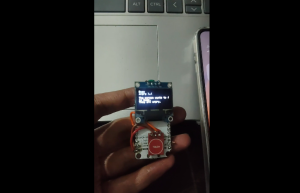NASA's Cassini has captured an image of the formation of a small object near Saturn's ring. This event may provide clues on the formation of moons as well as the structure of Saturn's existing moons.
The images were taken by the spacecraft's narrow angle camera, and they featured some disturbances at the edge of Saturn's A ring, one of the outermost rings. One of these disturbances is a small arc measuring around 75 miles long and 6 miles wide. This particular arc is brighter than the rest. Disturbances are very rare in the smooth edges of Saturn's rings and researchers believe that these are caused by the gravitational force of another object.
"We have not seen anything like this before," lead author Carl Murray of Queen Mary University said in a press release. "We may be looking at the act of birth, where this object is just leaving the rings and heading off to be a moon in its own right."
According to the scientists, the object, which was named Peggy, will not grow anymore and it could be falling apart. However, the process of its formation and its movement gave them clues in postulating how the planet's moons were formed, including its largest moon Titan, which is wrapped with clouds, and Enceladus, which holds a large ocean.
"Witnessing the possible birth of a tiny moon is an exciting, unexpected event," Cassini Project Scientist Linda Spilker, from NASA's Jet Propulsion Laboratory in Pasadena, Calif said in a press release. Spilker stated that they move Cassini's orbit nearer the outer edge of Ring A in the late 2016 in order to study Peggy at a better distance.
Murray also explained that the moon-formation capability of Saturn's rings may have ended with Peggy, as the rings are already depleted to create new moons. And since there is a possibility that this process may not be repeated again, Murray and his team are trying to learn as much as they can from the data sent back by Cassini.
Further details of this study were published in the April 15 issue of Icarus.
© 2025 HNGN, All rights reserved. Do not reproduce without permission.








